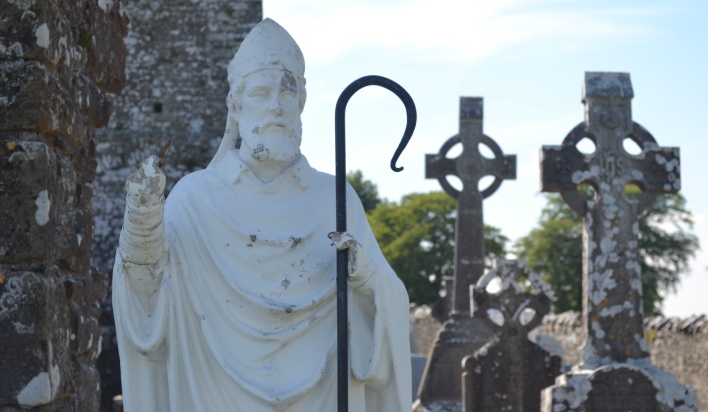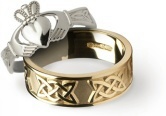Blog Categories
Blog CategoriesHistory of Ireland – Saint Patrick
“May the Irish hills caress you.
May her lakes and rivers bless you.
May the luck of the Irish enfold you.
May the blessings of Saint Patrick behold you.”
 |
| Statue of St. Patrick in Slane |
St. Patrick is Ireland’s patron saint and national apostle. It is not very well known but he is also the Patron Saint of Montserrat, Australia and Nigeria.
He is credited with bringing Christianity to Ireland. It is said that he was actually born in Britain around 385AD and his parents, Conchessa and Calpurnius were citizens of Rome but living in Wales or Scotland. As a teenager, he was captured and taken to Ireland. At that time, raids like this were common. There were warriors known as the ‘Picts’ and they would raid along the coast looting animals, clothes, weapons and even young people. On one of these raids, Patrick was taken.
Patrick then spent 6 years in slavery becoming a sheep-herder on the slopes of the Slemish Mountains in Co. Antrim, isolated from people and often cold and hungry. He managed to escape six years later and return home - to the delight of his family. He had a dream where an angel came and told him that a ship was leaving Ireland and he might be able to take it by traveling south, near Dublin. He began to realize that he may have a vocation to the priesthood, as his life of prayer and communication with God had become so central to him.
At that time the church was already established in Ireland with Pallidus as the Archbishop of Armagh. Ireland was not independent ecclesiastically but came under the jurisdiction of Arles in France and there was a direct link to Rome. Patrick prayed for the conversion of the Irish people. He wrote in his ‘Confessions’ that he had heard the ‘voice of the Irish’ saying ‘come back to us Patrick’. Patrick was later ordained a priest having learned Latin and French. He subsequently was appointed the second Archbishop of Armagh and the Primate of All Ireland. His stated aim was to preach to and convert the pagan Irish and to attempt to get independence from Arles by setting up structures and dioceses around Ireland. He set up a version of monastic structures all over Ireland as he passed through them.
St. Patrick laid the foundations for the Catholic Church in Ireland and also around Europe. There were monasteries built, many vocations and many monk missionaries left Ireland and went all over the world including Scotland, where they set up a monastery in Iona; France where they set up the Locmine monastery in Brittany and to Spain, North America and further afield.
St. Patrick used the shamrock as a visual aid and teaching aid to describe the Holy Trinity of father, son and holy spirit with the three leaves on the one stem depicting this and the shamrock is now synonymous with his teachings and legacy.
St. Patrick died in Armagh in 461 AD after spending 29 years as Archbishop. His grave is beside the Cathedral in Armagh.
The History of Ireland collection at Rings from Ireland is a collection of beautiful sterling silver jewelry that uses twelve powerful symbols to tell the story of the history of Ireland. From round towers, to the Irish flag, to the Vikings, the symbol of St. Patrick sits proudly at the center of the story of the history of Ireland.
 |
| History of Ireland Collection |
